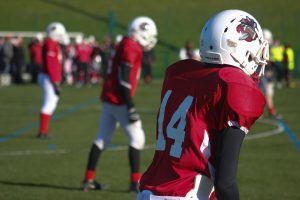 The legacy of head knocks in elite football players appear to go beyond neurological damage with new research finding a link to low testosterone and erectile dysfunction (ED).
The legacy of head knocks in elite football players appear to go beyond neurological damage with new research finding a link to low testosterone and erectile dysfunction (ED).
US researchers said concussion associated hypopituitarism may explain the association between concussion with low testosterone levels and ED.
A survey of 3,409 former professional US football players found those who reported multiple concussion symptoms during their football career were more likely to have been recommended or prescribed medication for low testosterone or ED.
Of the respondents, who had a median age of 52 years at the time of the survey, 18.3% reported low testosterone levels, 22.7% reported ED and 9.8% reported both.
About 40% of men reporting low testosterone and 50% of men reporting ED were currently taking relevant medications such as testosterone replacement therapy and phosphodiesterase type 5 inhibitors.
The study, published in JAMA Neurology, found a robust and increasing association between concussion symptoms including headaches, nausea, dizziness, confusion, memory problems, seizure and loss of consciousness and self-reported low testosterone and ED.
“Even participants with relatively few concussion symptoms (ie, those in the second quartile) had significantly elevated odds of reporting low testosterone levels compared with men in the lowest quartile,” the study authors said.
“Acceleration and deceleration forces can shear axonal tracts that connect the pituitary to the hypothalamus. Thus, the combination of intracranial pressure, reduced blood flow, and diffuse axonal injury between the pituitary and the hypothalamus could cause diminished pituitary function, leading to low testosterone levels and ED.”
The findings support other evidence linking single head injuries with pituitary dysfunction in the general population, professional boxers and war veterans.
Associate Professor Michael Buckland, head of neuropathology at the Royal Prince Alfred Hospital, told the limbic that vascular or nerve injury impacting the pituitary were both possible.
“The vessels that supply the pituitary are quite long and prone to injury. The other thing is it could be a nerve fibre injury because there are lots of nerve fibres from the hypothalamus down to the pituitary,” he said.